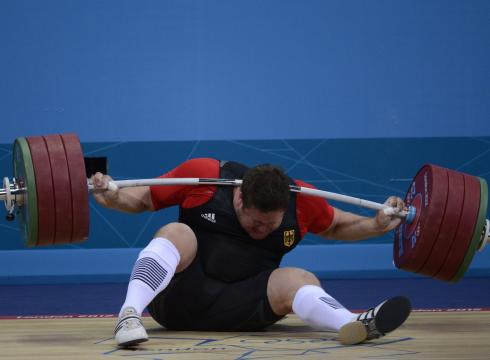If there is one movement pattern that needs to be a staple in almost every program regardless of the goal, it's the squat. It doesn't matter if you want to jump higher, run faster, get stronger, or tighten up the "backyard" for summer, a solid squat will help. Any decent strength coach would agree that perfecting and building strength in this motor pattern will provide trainees a lengthy list of benefits, to name a few:
· Aids in strength and mobility of the hips.
· Strengthens abdominals and lower back.
· Teaches safe mechanics of lifting heavy objects.
· Increases balance and stability.
· Provides a non-surgical butt lift that both men and women will admire.
· Ensures ability to get off the shitter when you're in your 80s without needing an assist from the grandkids.
There is no substitute for the squat, if you are strength training and neglecting this movement and it’s many variations, you are leaving a lot of benefits to training on the table!
A Safe and Effective Way to Start
The most frequent problem with squatting is that a lot of gym goers tend to skip directly to advanced type of squats prior to developing the motor pattern necessary to build strength safely. A barbell has no business in your squat if you can’t properly bodyweight squat with your thighs parallel to the ground WITH EASE. It doesn’t matter what you saw on the CrossFit games, not only are you wasting your time, you are going to get hurt. You must crawl before you can walk. If you can bodyweight squat a set of 20 continuous reps with ZERO pain in hips, knees, ankles, or back to parallel depth, the next logical step is the goblet squat.
photo: themovementprogram.wordpress.com
The end result of squatting with a barbell before you are ready.
The Goblet Squat: A Rookies’ Best Friend
Once the bodyweight squat pattern has been nailed, it’s time to apply an external load to increase strength. Nothing against barbell front and back squats, they are awesome, but the goblet squat is a safer option while cleaning up squat mechanics than holding a heavy barbell in the rack position or loading the spine, that day will come later. What makes the goblet squat so effective for a rookie is that because the weight is loaded anteriorly, the counterbalance of the dumbbell makes it much easier to descend into a proper squat position getting the hips back and keeping the chest up, ensuring proper recruitment of the glutes, quads and hamstrings and limiting forward lean or a rounded spine. You’ll squat deeper and safer with the goblet squat leading to better technique, stability, and strength in the more advanced variations.
Execution
Grab a dumbbell from one of it’s ends and hold it like a goblet (I personally have never held a goblet, but I guess this is how it would be done). Hold the dumbbell close to your chest. Using a stance shoulder width apart or even a little wider and toes slightly externally rotated, descend as deep as you can while keeping a neutral spine (upright posture) and both of your feet plastered to the floor. Push through your feet and return to the starting position.
If the weight is light enough you can pick it up from the floor. As you continue to go up in weight however, you may want to put the dumbbell on a bench to make it easier to get to the starting position.
Integrating the Goblet Squat
If you haven’t been doing much loaded squatting, like anything else when you are a newbie, start light. “Grease the groove” for a few weeks with lighter weights and higher reps (15-20) to develop a safe and consistent motor pattern. Feel free to challenge yourself and go to fatigue but stay away from reckless form, the goal is to use 100% perfect form on every single rep.
After you feel comfortable with the movement, progress up the dumbbell rack and start doing some lower rep sets with heavier dumbbells. Don’t be scared to hold some heavy weight, just focus on bracing the abs and keeping your chest up. Eventually you will be limited by the amount of weight you can hold in the goblet position. At this point, if your technique is sound, it’s time to graduate to more advanced squat variations!


